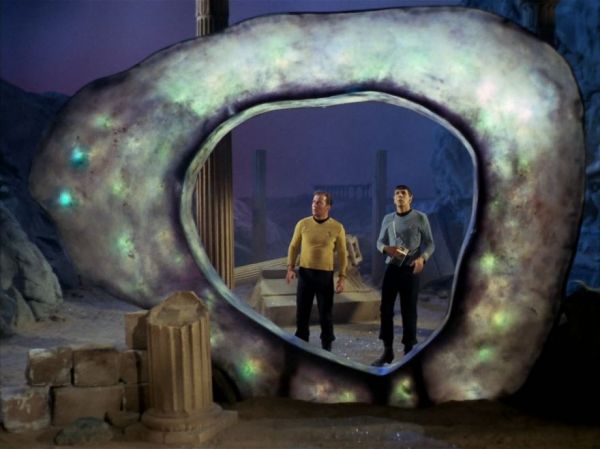
We’ve had the Star Trek universe for 50 years now, which includes 726 episodes of six television series plus 12 movies (soon to be 13). The concept of time travel has figured prominently in many of those stories, but it doesn’t always work the same way. In some tales, the theory is of a “consistent universe,” in which you can’t change the past. What has happened has always happened, and if you think you’re changing it, you’ll find that you’re just part of history. In other stories, the timeline of the universe is changeable. In fact, if you change the past and don’t like the results, you can go back and change it again. Then there are some episodes where both theories are present, or you might say, a hybrid of those theories.
The animated series (TAS) was one of the first to build on the ideas presented in “The City on the Edge of Forever.” The episode “Yesteryear” has the Enterprise return to the Guardian of Forever to monitor the past eras flashing across its surface. This causes a change to the timeline—without even going back to the past. Luckily the Enterprise still exists, but Spock has been replaced as First Officer by an Andorian. The change happened because Spock didn’t go back in time as he was supposed to. To repair the timeline, he must go back and visit his childhood self on Vulcan.If that wasn’t complicated enough, the crew of the Enterprise occasionally gets stuck in a time loop, Groundhog Day-style, until they can figure out how to stop it. Even more confusing, sometimes time travel splits the timeline in two parallel timelines, two alternate universes that exist without awareness of the other. Can all these theories ever be reconciled? Possibly; after all, Star Trek is fiction. Read about the different rules of time travel in the Star Trek universe, with examples and explanations, at Ars Technica.
Consider: If Spock hadn’t failed to travel into Vulcan’s past, the timeline wouldn’t have been changed. If the timeline hadn’t been changed, he never would have had a reason to go into his past in the first place. (Janeway’s headache coming on yet?)
In a sense, this is an integration of both the consistent universe and the changing timeline models. And some of the episodes mentioned under the header of “consistent timeline” also show signs of belonging to both categories. DS9’s “Past Tense” has the Defiant crew experience their timeline changing around them even though the same time travel incident includes evidence of a “consistent universe” event. In many of these episodes, even if the crew’s actions do end up as part of the way things were “supposed” to happen, the crew still worries about damaging the timeline. They act as if their actions potentially could alter history.

No comments:
Post a Comment